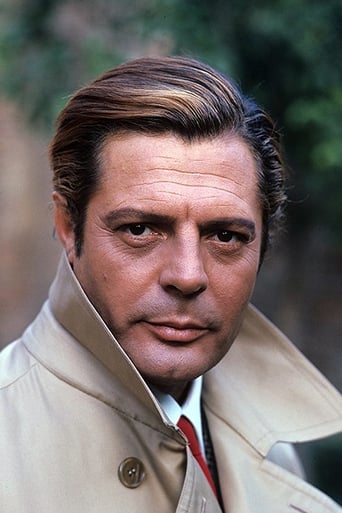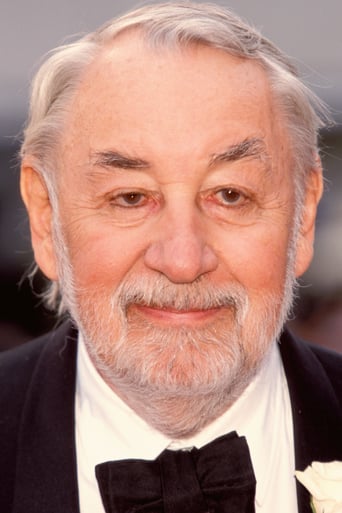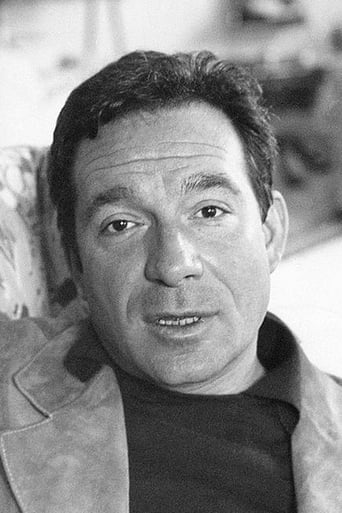GamerTab
That was an excellent one.
GrimPrecise
I'll tell you why so serious
Taraparain
Tells a fascinating and unsettling true story, and does so well, without pretending to have all the answers.
bobc-5
Several tribes of Native Americans have taken up residence in a large excavation in the center of modern day Paris. Meeting nearby in an ornate domed room, some wealthy industrialists decide that the savages are impeding progress and must be exterminated. After successfully bribing the head of the army, General Custer is brought in to lead the effort. A portrait of their President, Richard Nixon, seems to watch over them from everywhere.Made in the early 1970s, this surreal black comedy is usually interpreted as a scathing commentary on America's involvement in Vietnam, but I didn't see it that way. There is nothing in the film which significantly corresponds to the Vietnam conflict, and the few American symbols which show up are so awkwardly out of place and the characters exaggerated in such a ludicrous manner that it had the effect of constantly reminding me that this wasn't really about Americans. I can't claim to know how the European audience for which it was intended would have viewed it, but I saw it as a satirical look at European racism and colonialism (which, of course, would ultimately include both the genocide of Native Americans and the conflict in Vietnam) and a left-wing allegory of capitalism in which the Native Americans represent the oppressed working classes.As a social/political satire, it achieves it's greatest success in depicting an absolute and brutal racism without being didactic or calling unnecessary attention to it. The most interesting character is Custer's Indian scout. Moving freely among both European and Native American societies, he is detested by both groups and detests both of them in return. The title of the film comes from Custer's constant reminders of the many things which the scout, being an Indian, is not allowed to do. When asked by another Native American why he hates Custer so much, the scout replies "because he treats me like... an Indian". The pause in delivering the line and the comic reaction of both characters afterward is handled exceptionally well.All in all, the film's success as a left-wing critique of capitalism/colonialism is limited because so many of its clever subtleties get lost in the comedic noise. As a satire on American imperialism it fares much more poorly, coming dangerously close to being little more than a partisan screed. It does, however, achieve moderate success at being an entertaining absurdist farce with excellent comedic performances by the lead actors.
Lee Eisenberg
Marco Ferreri's "Touche pas a la femme blanche" - "Don't Touch the White Woman" in English - could easily be an extension of "Little Big Man" or a movie version of "A People's History of the United States", although it came out a few years before Howard Zinn published his famous book. It portrays the US government's crusade to exterminate the Indians, reenacted in 1970s Paris (complete with references to Pres. Nixon, and even Watergate). Marcello Mastroianni makes a chilling Gen. Custer, but Michel Piccoli is quite funny as Buffalo Bill: he sounded as though he was trying to put on an American accent while speaking French! I read about how Marco Ferreri played a major role in the changing Italian cinema of the '60s and '70s. Certainly this film shows that. Specifically, as the United States had been taking a different look at its own history - our own glasnost and perestroika, you might say - Europe was also challenging the American cultural myth (no surprise there). I definitely recommend the movie. Also starring Catherine Deneuve and Ugo Tognazzi.
writers_reign
... other than Les Halles - the 'stomach of Paris' had recently been razed to the ground and this ... I hesitate to use the word film ...was filmed in the space created. Fereira acknowledges no rules of logic; time and again we are told we are in Washington DC or in Dakota, scene of the Little Big Horn aka Custer's Last Stand yet all the shop signs are in French and there is even the occasional street sign bearing the legend: Rue; there are even more specific references to President Nixon - indeed his photograph is prominent, yet most of the principals are dressed for the nineteenth century, including Catherine Deneuve. Somehow, and God KNOWS how, Fereira is able to get fine actors to forget all their training and turn in performances that would be unacceptable in a Church hall and I myself am equally naive, having seen ONE Feriera piece of crap in the same season as this I knowingly and willingly subjected myself to a second using the logic that NOTHING could be worse than Dillinger Is Dead. Boy, Did I Get A Wrong Number.
Orson LePhat
Filmed in Paris, not Rome. And more a critique of American politics than Italian. They used the building site from the demolition of the traditional Les Halles district in the heart of the city as the location for their wild, wild west - including the huge pit that is now the Les Halles shopping center (and cinemas, swimming pool, parking lot, etc). Inspired! All the scenes are set in and around the building site. Custer makes his last stand, horses gallop past modern cafés, the familiar Parisian architecture rings the pit, and a Pinkerton agent Pinkerton himself) walks around in modern dress. Throw in every leading French actor of the era (some of them still around) as both cowboys and Indians and you've got the makings of a fantastic farce.




